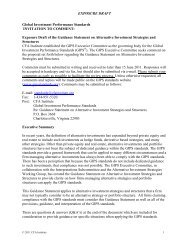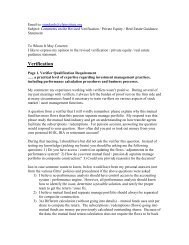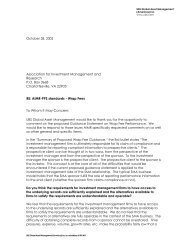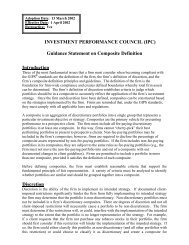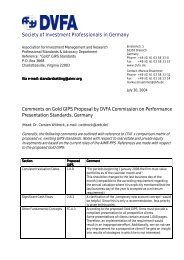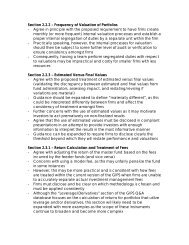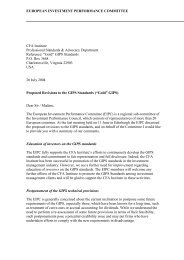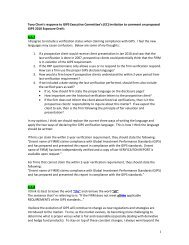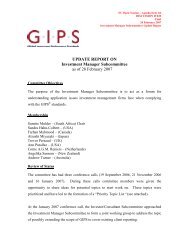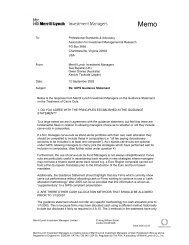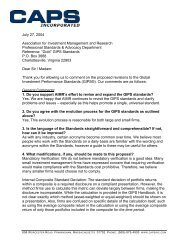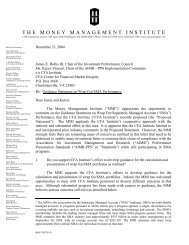Best Practices for Creating and Maintaining Policies and ... - GIPS
Best Practices for Creating and Maintaining Policies and ... - GIPS
Best Practices for Creating and Maintaining Policies and ... - GIPS
Create successful ePaper yourself
Turn your PDF publications into a flip-book with our unique Google optimized e-Paper software.
Since error correction policies will vary greatly from one firm to another, it is not reasonable toprovide one example policy that would be applicable to a wide audience. Please refer to therequirements in the Guidance Statement on Error Correction as well as the considerationsprovided below.Procedures to consider:• The firm should create a procedure <strong>for</strong> documenting any error identified. Suchdocumentation would include the date of the error, the cause of the error, the level ofmateriality, how the error was ultimately addressed, <strong>and</strong> actions taken to prevent similarerrors in the future.• The firm should establish procedures <strong>for</strong> tracking which compliant presentation(s) wereprovided to which prospective clients <strong>and</strong> when. Doing so will allow the firm to knowwho must receive a corrected compliant presentation in case the firm subsequentlydetermines a previously distributed compliant presentation includes a material error. Suchprocedures will also allow the firm to determine when ongoing prospective clients mustreceive an updated compliant presentation.• The firm should also consider implementing procedures <strong>for</strong> identifying potential errors,such as reviewing composites <strong>and</strong> per<strong>for</strong>mance advertising materials on a regular basis.Helpful hints:• Materiality must be defined <strong>and</strong> documented within the scope of the firm’s errorcorrection policy. In developing criteria <strong>for</strong> assessing the materiality of an error, keep inmind a key determinant of materiality: Could the error potentially change a prospectiveclient’s decision to invest?• Consider how material the error is within the context of the entire compliant presentation.A number of immaterial errors in a presentation may add up to a material error whenconsidering the presentation as a whole. In addition, both current <strong>and</strong> prior time periodsshould be considered.• Remember that even a very small error may be material if it moves a composite fromoutper<strong>for</strong>ming to underper<strong>for</strong>ming its benchmark’s return.• Materiality thresholds may differ across asset classes (equities, fixed income, emergingmarkets, etc.), reporting frequency (monthly, quarterly or annual results), <strong>and</strong> timeperiods (more recent results may be considered more material than historical results, insome contexts).• Consider a higher materiality threshold <strong>for</strong> volatile equity styles <strong>and</strong> a lower threshold <strong>for</strong>less volatile fixed income strategies.• A number of disclosures required in a compliant presentation involve an offer to providein<strong>for</strong>mation, such as the firm’s list of composite descriptions. Since the offer is a required<strong>Best</strong> <strong>Practices</strong> <strong>for</strong> <strong>Creating</strong> <strong>and</strong> <strong>Maintaining</strong> <strong>GIPS</strong> <strong>Policies</strong> & Procedures Page 24



